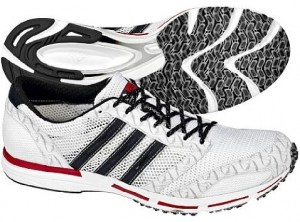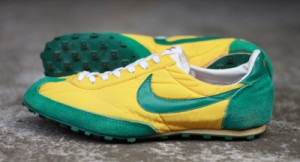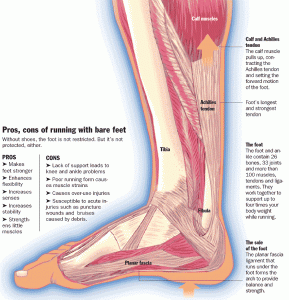Alexander Technique , to me at least, seems to be based on the idea that we often do unhealthy stuff without knowing it. We may think we’re standing, walking or running efficiently, but when we stop to analyze it, we find we’re out of balance, working inefficiently or causing ourselves pain.
Here’s Caprice’s experience with Alexander and running:
“I have been running for a relatively short time, four years this February. Every year is a little different. I have a feeling this year will be significantly different.
When I started my pilates teacher training in 2003, I was fortunate enough to be working with a teacher who is also an Alexander Technique teacher. She incorporated Alexander Technique into our pilates teacher training so that we would be able to work with ourselves and not injure ourselves while we are teaching. This was the beginning of a very important change.
Alexander Technique was developed by F.M. Alexander, an Australian actor, who identified that he (and we) have a “debauched” kinesthetic awareness. We think we’re doing all the right things with our bodies, and that we know where our bodies are at any given moment as we move through space, accomplishing any task. Really, we’re not. We started moving around as soon as we entered this world, and we developed movement patterns and habits that are what we consider “normal” for us. This version of “normal” could really mean that we have tense jaw muscles, shoulders that are up around our ears, a poor breathing pattern, an aching lower back, tight hips, sore knees, toes that grip the inside of our shoes… the list could go on and on. Alexander Technique helps us become aware of these things that we do and gives us the opportunity to divest ourselves of these habits, even if only for a few seconds. Long enough for our neurological system to realize that things could be different. Long enough for our bodies to be sent into a slight state of flux while it processes the new inputs our brain is receiving.
During my almost four years of running, I have had a number of injuries surface that I have had to address with Alexander Technique, massage therapy, pilates and rest. My last period of rest lasted about three months, and concluded when I started running regularly again at the end of August.
In September, I started taking an Alexander Teacher Training course. Most of the course is very experiential, though there is a lot of discussion of the theory behind the work. My running has already changed. For example, I noticed some time ago that when I run, my left foot and my right foot do not land the same way. My left hip and my right hip do not feel the same. My upper body does not feel like it is rotating equally to the left and right with every step. This past Sunday, I was out for a 12k run. I had some aching in my left knee for the last two or three kilometres, but it didn’t feel signficantly different from the occasional aching I get when I’m running on a day when I’m feeling a little “off.” By Sunday night, I was limping, taking Advil, and icing my left knee. I rested Monday, Tuesday, Wednesday and Thursday. I was fortunate enough to have scheduled an Alexander Technique session with my teacher on Wednesday, and during that session, I experienced a significant change that made me feel two things: my midline felt like it moved way over to the right, and my left footfall changed such that I supinated less when I walked.
Optimistic, I headed out for a run this morning.
I have to say, this morning was a near-perfect running experience. Not only was it completely pain-free, but I experienced changes in my gait while I was running. I kept reminding myself to let go of muscular tension that was unnecessary, to keep my hips free, think though my whole foot, allow my ankles to free so that my feet could roll underneath my tibiae. It was really great. AND I had a negative split without even trying.
My Alexander Teacher has explained to me that while I’m going through my Alexander Teacher Training, my body will be in a state of flux. This means, while my neurological system is adjusting to all the new inputs it is receiving, it is quite possible that more aches and pains will show up that will have to be addressed. My hope is that when my training is finished, in July of 2012, that my kinesthetic sense will be significantly less “debauched.””
Okay, so the post title’s a stretch. – SR


